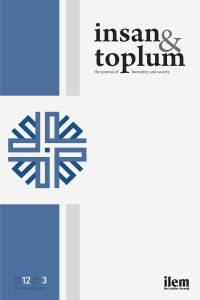A Comparison of Charles Taylor and Talal Asad on the Issue of Secularity
Talal Asad and Charles Taylor have been thinking and writing about secularism for at least one decade. Their works are widely read, discussed, and admired. They, by andlarge, constitute the contemporary framework of discussion for those interested in issues revolving around secularization, secularism, and the secular, which althoughare terms that refer to distinctive phenomena, are often misused as if they are either the same or simply aspects of the same process. However, these two scholars still hold significantly different, if not mutually contradictory, ideas about secularism. The aim of this article is not to provide a summary of their thoughts on secularism, but rather, to compare and contrast their critically different approaches to the issue of secularism. In this regard, this article argues that an unbridgeable gap exists between Asad’s and Taylor’s approaches to and engagements with the secular. This article first covers Taylor’s and then Asad’s approach and method through a close reading of Taylor’sA Secular Age, and Asad’s Genealogies of Religion, Formations of the Secular, and the edited volume on him, Powers of the Secular Modern
A Comparison of Charles Taylor and Talal Asad on the Issue of Secularity SHARE
Talal Asad and Charles Taylor have been thinking and writing about secularism for at least one decade. Their works are widely read, discussed, and admired. They, by andlarge, constitute the contemporary framework of discussion for those interested in issues revolving around secularization, secularism, and the secular, which althoughare terms that refer to distinctive phenomena, are often misused as if they are either the same or simply aspects of the same process. However, these two scholars still hold significantly different, if not mutually contradictory, ideas about secularism. The aim of this article is not to provide a summary of their thoughts on secularism, but rather, to compare and contrast their critically different approaches to the issue of secularism. In this regard, this article argues that an unbridgeable gap exists between Asad’s and Taylor’s approaches to and engagements with the secular. This article first covers Taylor’s and then Asad’s approach and method through a close reading of Taylor’sA Secular Age, and Asad’s Genealogies of Religion, Formations of the Secular, and the edited volume on him, Powers of the Secular Modern
___
- Asad, T. (1986). The idea of an anthropology of Islam [occasional papers]. Washington, D.C.: Georgetown University, and Center for Contemporary Arab Studies.
- Asad, T. (1993). Genealogies of religion: Discipline and reasons of power in Christianity and Islam. Baltimore and London: The John Hopkins University Press.
- Asad, T. (2001). Reading a modern classic: W. C. Smith’s “the meaning and end of religion.” History of Religions, 40(3), 205-222.
- Asad, T. (2003). Formations of the secular: Christianity, Islam, modernity. Stanford, California: Stanford University Press.
